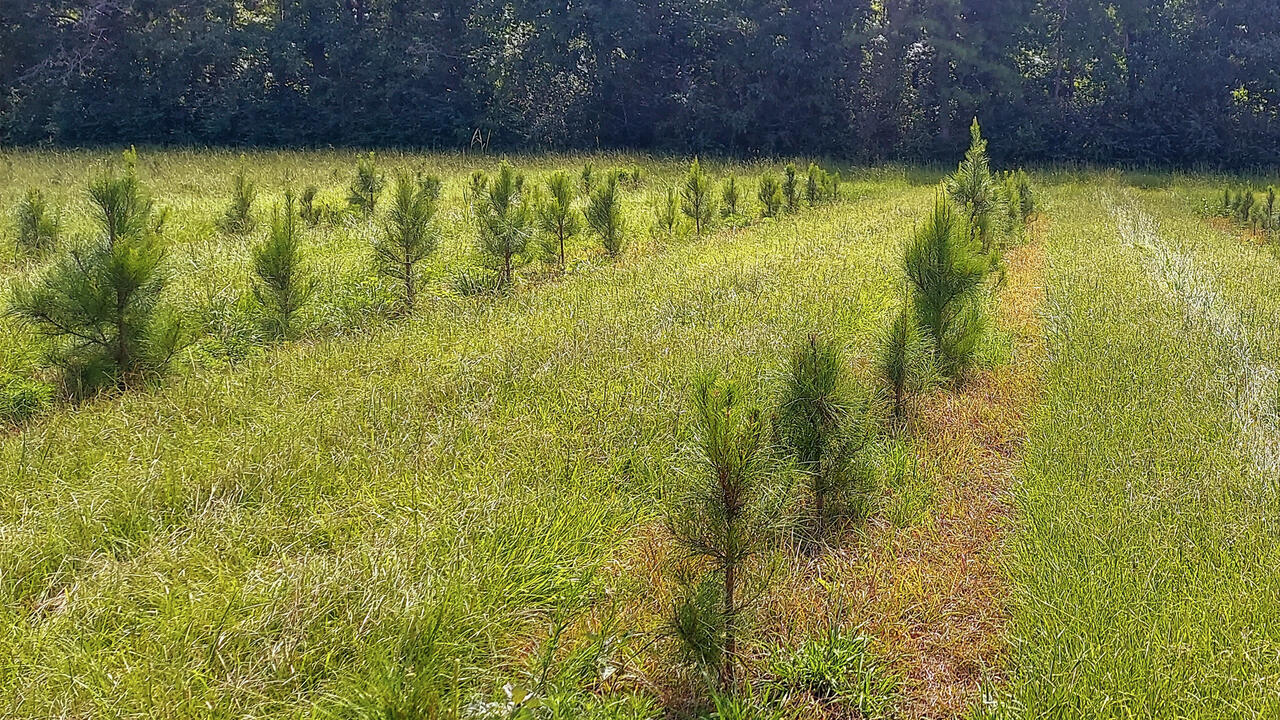RAYMOND, Miss. -- Many Mississippi landowners are weighing their options for replanting pine trees as they face a market marred by inflation, reduced stumpage prices and often an inability to conduct thinnings.
Curtis VanderSchaaf, a forestry specialist with the Mississippi State University Extension Service, said landowners have several options to help them decrease these costs and get a reasonable return on their financial investment.
“The first option is to plant fewer seedlings per acre,” VanderSchaaf said. “Decreasing the number of seedlings is a cost savings right off the bat, and this also, obviously, lessens the cost of planting -- actually getting the seedlings in the ground.
“Beyond that, costs of site preparation practices that depend on the number of passes across a property, such as bedding or ripping and subsoiling, can potentially be reduced. When not as many passes are needed across a property with heavy equipment, there will likely be less erosion and compaction,” he said.
By pairing lower planting density with a rectangular planting pattern, what is known as rectangularity, landowners can save money on site preparation and upkeep practices, including early herbaceous weed control. The lower planting density should allow an earlier harvest of more valuable chip-n-saw and sawlog timber.
“Tighter within-row spacings due to the rectangularity can reduce the amount of degrading knots, and mills may potentially be able to rotate the log to minimize the impacts of the between-row spacings,” VanderSchaaf said.
“Landowners can delay the first thinning to ages 18 to 23 years and do only a chip-n-saw-dominated thinning before a clearcut at somewhere between ages 27 to 33 years -- depending on mid-rotation practices and site quality,” he said.
Planting fewer trees has additional benefits, including understory vegetation production and associated benefits to wildlife, hunting lease rates, inadvertent fire breaks, and a reduced number of harvesting operations and contracts.
Brady Self, an MSU Extension forestry specialist, said the reduction in planting density is the current general strategy used by forest managers across the South. However, proper site preparation is always crucial to the early survival and long-term productivity of any forest. Landowners should evaluate their site to choose the best method -- mechanical, chemical or controlled burning. All three categories can be beneficial.
Self, who is also a professor in the MSU Forest and Wildlife Research Center, said prescribed fire is the least expensive site treatment. Although it can provide many benefits, including wildlife habitat improvement and site cleanup, it is not as useful for competition control or correcting soil problems on sites with planted seedlings.
“Mechanical site preparation, which can improve physical site conditions and provides some short-term competition control, has historically been the primary method used,” he said. “But chemical site preparation is now the primary form of site preparation used in the South because it is more cost effective.
“Just keep in mind that it can provide excellent competition control but does not correct any problems associated with planting site soils. You may need to use chemical and mechanical methods together,” he said.
Choosing the correct species for the site is also important. While pine species can be planted on a variety of sites, matching the species to their preferred soils and site conditions will help landowners achieve their end goals.
“There are multiple genetic options for both bare-root and containerized seedlings. Landowners should consult with a forester or nursery manager to determine what type of seedling, level of genetic improvement and seedling family is appropriate for meeting their management goals on their specific property,” Self said.
Expenses related to reforestation practices, including costs for site preparation, seedlings, labor of others, tools and depreciation on equipment used, qualify for a tax reduction.
The federal reforestation tax deduction and amortization provisions allow landowners to deduct annually up to $10,000 of qualified reforestation costs on each qualified timber property, or QTP, they own. The remainder of the costs can be amortized over the next 8 years.
Mississippi offers a unique, nonrefundable credit -- the Mississippi Reforestation Tax Credit. Landowners who qualify can receive annually up to $10,000 in tax credit to offset income tax liability. Additionally, landowners should be able to deduct and amortize the remaining costs. They may also qualify for cost-share exclusion through Section 126.
All tax treatments vary based on the intentions and actions of the landowner. VanderSchaaf urges all landowners to work with an accountant who is knowledgeable about timber taxes.
MSU Extension Publication, 2470, “Managing the Family Forest in Mississippi” offers more in-depth information about managing timberland.
MSU Extension Publication 2307, “Timber Tax Overview,” includes general information about timber taxes, keeping a tree farm journal and additional sources for timber tax information.
MSU Extension Publication 2420, “Paying for a New Forest Without Cost-Share Funding,” includes information about the federal reforestation tax deduction and amortization incentives and the Mississippi-based timber tax credit.
Contacts
-
 Extension Professor
Extension Professor- Forestry
-
 Associate Professor
Associate Professor- Central MS Research & Ext Center
